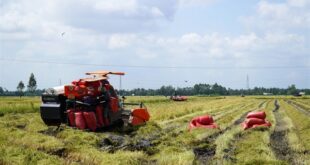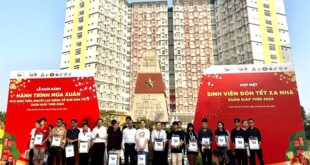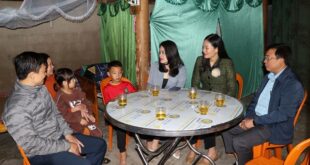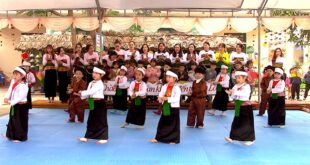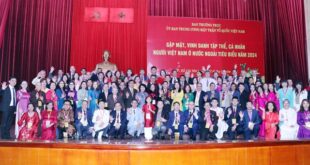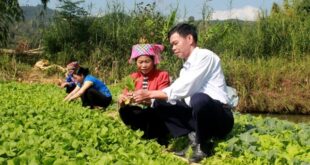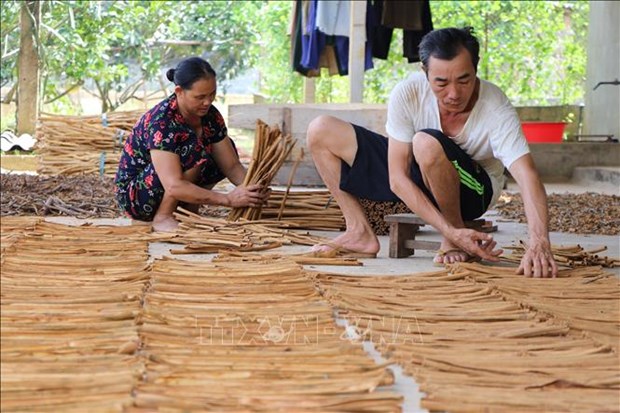
YÊN BÁI — Cinnamon trees have become a key agricultural product in the economic development of the northern mountainous province of Yên Bái, providing people there with a new source of income.
The province is focussing on well-implementing policies and solutions to grow the tree sustainably and now has over 80,000 hectares of cinnamon trees, accounting for one-third of the total locally-planted forest area.
For a long time, Yên Bái has effectively implemented cinnamon tree growing projects, and promoted supporting policies for local households to take care of cinnamon trees.
The province has included cinnamon in its annual afforestation plan; there are many policies to attract investment in processing cinnamon products to maximise the potential and advantages of cinnamon trees.
The province has planned processing facilities for cinnamon trees’ bark, wood and essential oil sustainably, promoting the application of technology to the processing process to improve the quality and value of cinnamon products; strengthening consulting and business support activities.
Nguyễn Thái Bình, Deputy Director of the provincial Department of Agriculture and Rural Development, said it has paid special attention to developing and maintaining quality raw materials, preserving seeds, and promoting trade to find a market.
The agricultural department has sent experts to instruct farmers on growing, taking care of and preventing pests, as well as harvesting and preserving cinnamon products.
It also guided enterprises to build brands and prevent trademark commercial fraud.
At first, cinnamon was planted mainly in the Văn Yên District, which was considered the “capital” of cinnamon in Yên Bái Province.
But now, the cinnamon growing area has been expanded to across the province with main areas in districts of Văn Yên, Trấn Yên, Yên Bình, Lục Yên, Văn Chấn, Trạm Tấu and Mù Cang Chải.
Hà Đức Anh, Chairman of the Văn Yên District People’s Committee said: “Each year the district sell-out to the market about 8,000 tonnes of fresh cinnamon bark, 63,000 tonnes of cinnamon leaves, 300 tonnes of essential oil and 51,000 cu.m of cinnamon wood.”
“Many families have cinnamon hills worth tens of billions of đồng. Đặng Nguyên Minh’s household in Khe Phầy Village has 60 hectares and Hoàng Văn Minh’s household in Đoàn Kết Village has 50 hectares,” he said.
Vũ Lê Chung Anh, Chairman of Trạm Tấu District People’s Committee, said that after three years of planting trees in ethnic minority regions, every year growers have harvested pruning branches and leaves to sell for VNĐ2,500/kg, giving them money to spend on daily living.
“Then, people sell cinnamon branches, leaves and trunks, so the value of trees is very high,” he said.
Between 2021 to 2025, the province will issue supportive policies for cinnamon production with VNĐ2 billion in investment towards a 1,000-hectare-acreage project.
So far, there are 17 large-scale cinnamon extraction factories with a total capacity of 1,000 tonnes/year in Yên Bái Province.
And there are more than 400 small-scale cinnamon oil processing establishments with a capacity of 200 tonnes/year and many processing facilities for cinnamon bark, cinnamon wood and handicraft workshops processing products from cinnamon, according to the agricultural department. VNS
- Reduce Hair Loss with PURA D’OR Gold Label Shampoo
- Castor Oil Has Made a “Huge” Difference With Hair and Brow Growth
- Excessive hair loss in men: Signs of illness that cannot be subjective
- Dịch Vụ SEO Website ở Los Angeles, CA: đưa trang web doanh nghiệp bạn lên top Google
- Nails Salon Sierra Madre
 VnExpress News The News Gateway of Vietnam
VnExpress News The News Gateway of Vietnam
